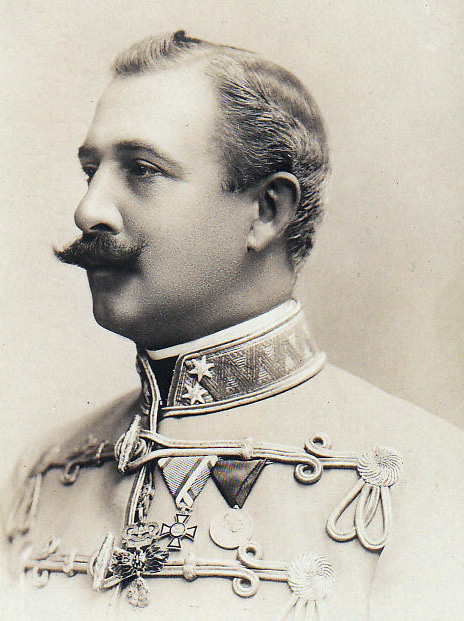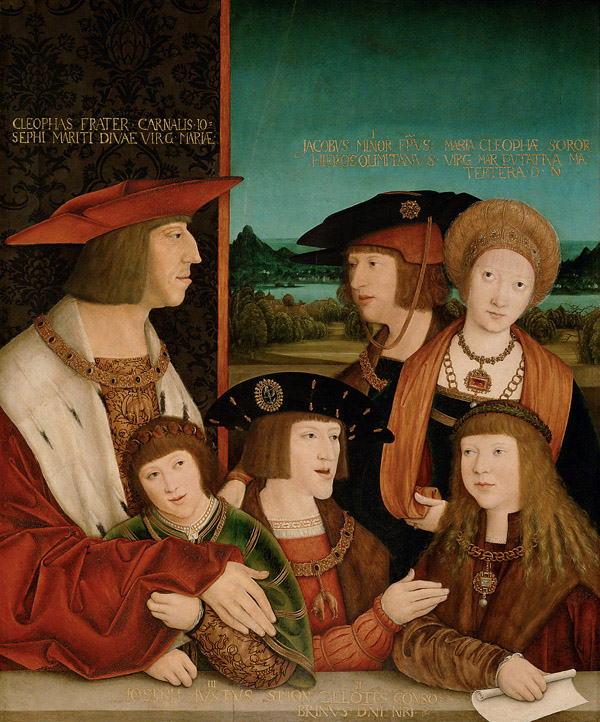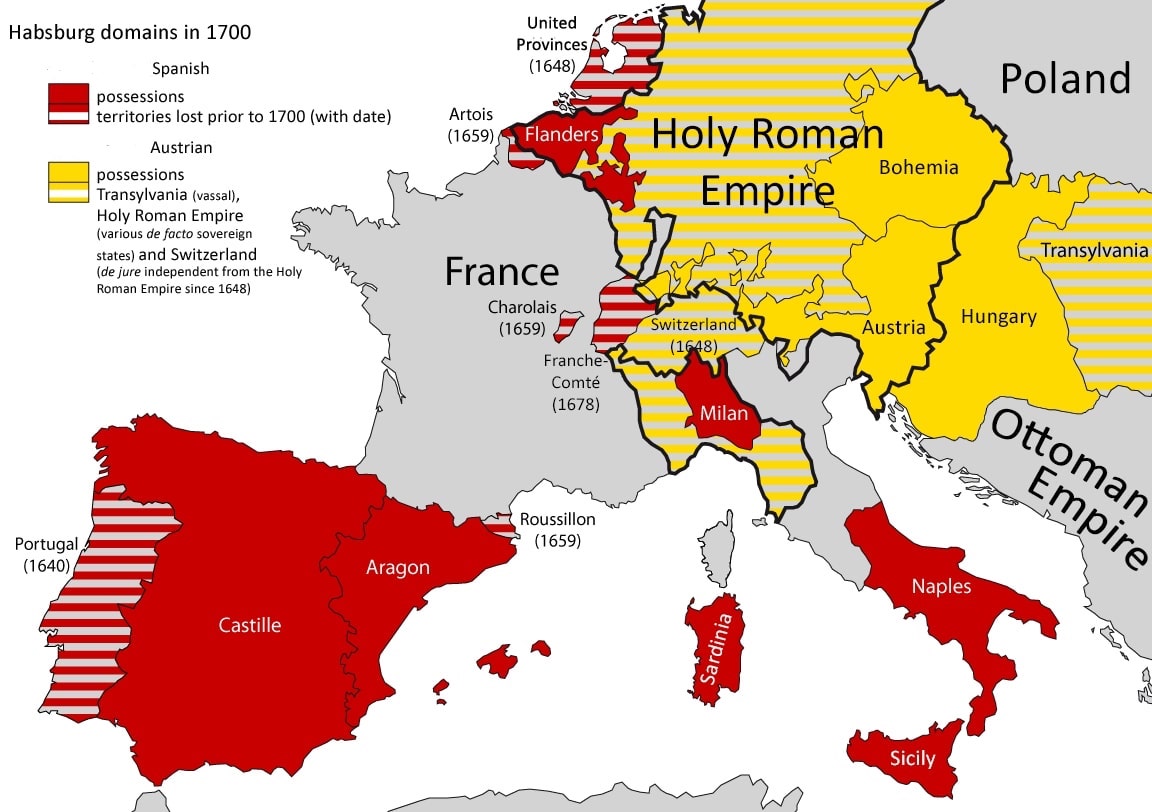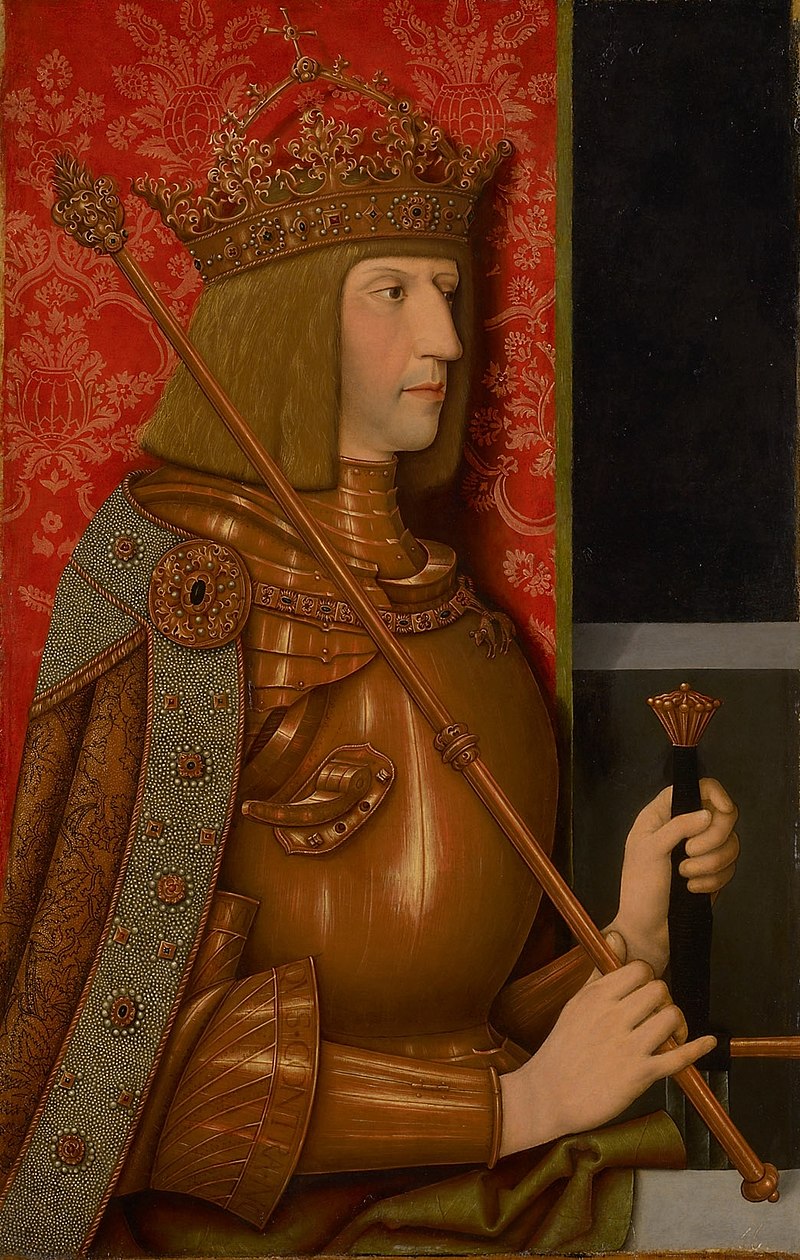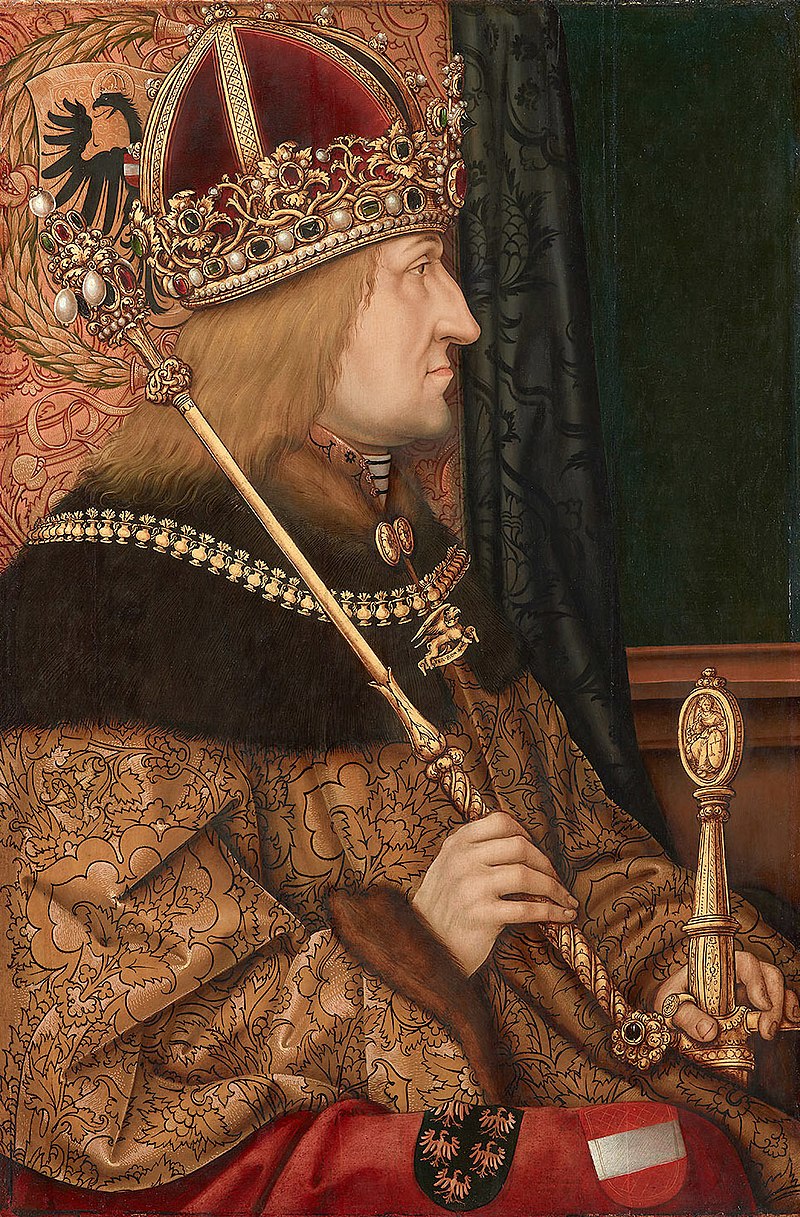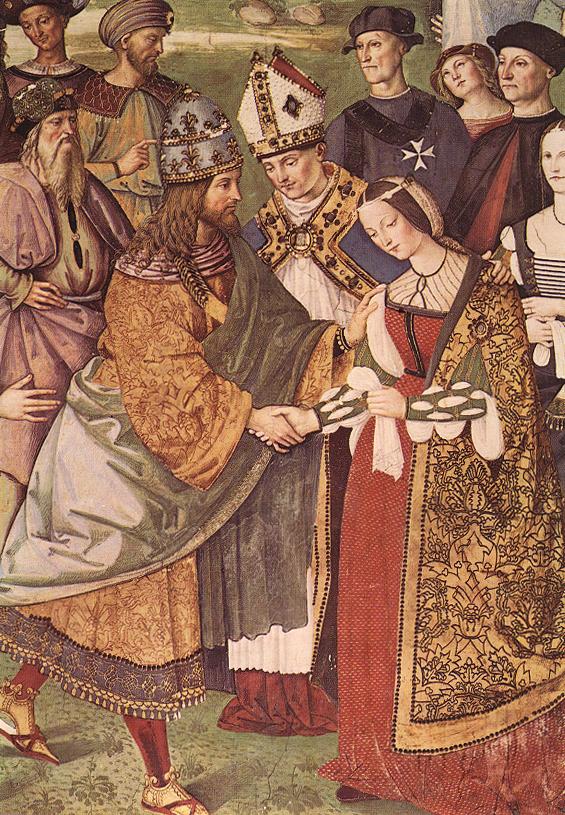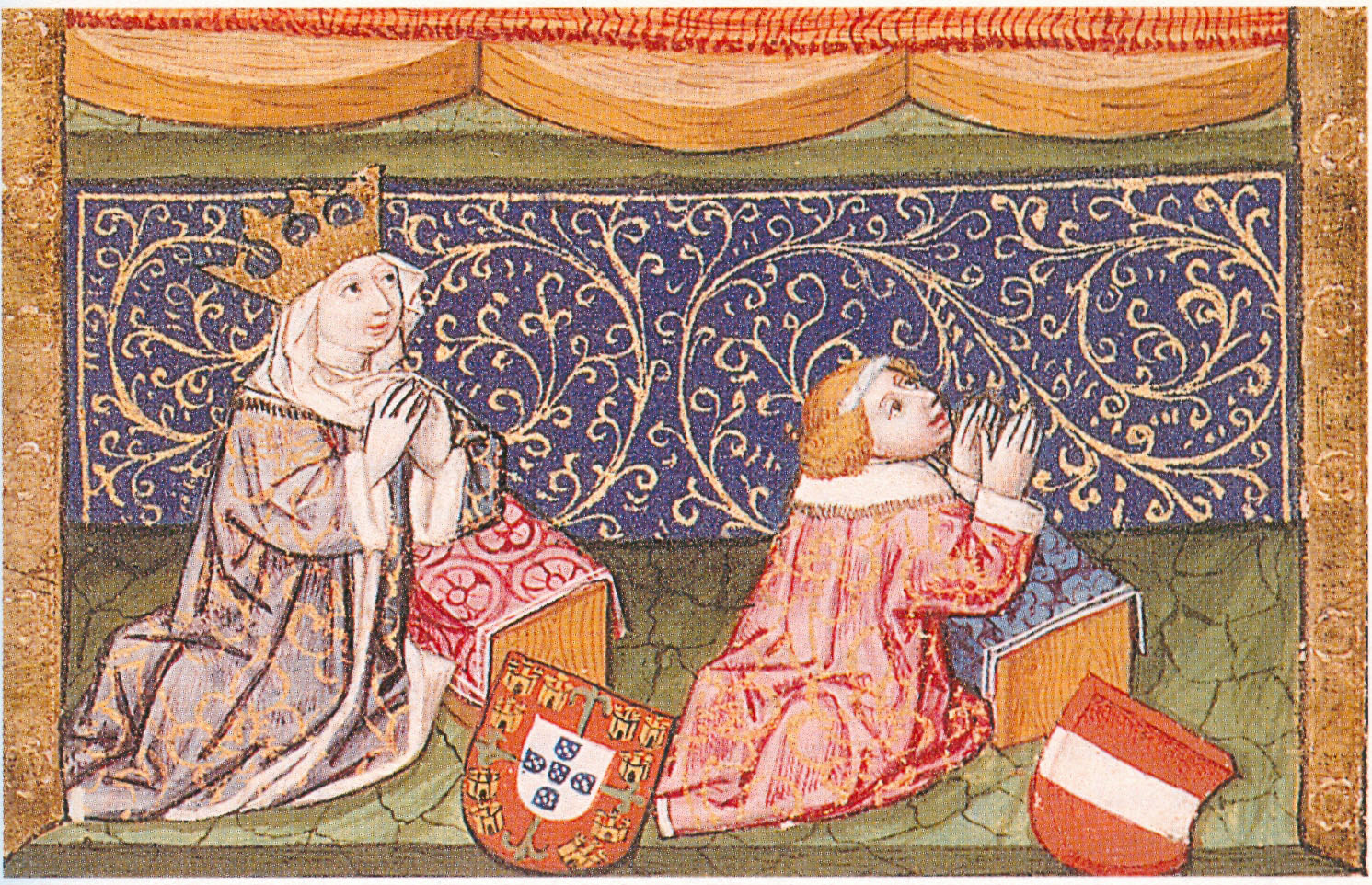by Susan Flantzer
© Unofficial Royalty 2023

Rudolf II, Holy Roman Emperor, circa 1576-1580; Credit – Wikipedia
The Holy Roman Empire was a limited elective monarchy composed of hundreds of kingdoms, principalities, duchies, counties, prince-bishoprics, and Free Imperial Cities in central Europe. The Holy Roman Empire was not really holy since, after Holy Roman Emperor Charles V in 1530, no emperors were crowned by the pope or a bishop. It was not Roman but rather German because it was mainly in the regions of present-day Germany and Austria. It was an empire in name only – the territories it covered were mostly independent each with its own rulers. The Holy Roman Emperor directly ruled over only his family territories, and could not issue decrees and rule autonomously over the Holy Roman Empire. A Holy Roman Emperor was only as strong as his army and alliances, including marriage alliances, made him, and his power was severely restricted by the many sovereigns of the constituent monarchies of the Holy Roman Empire. From the 13th century, prince-electors, or electors for short, elected the Holy Roman Emperor from among the sovereigns of the constituent states.
Frequently but not always, it was common practice to elect the deceased Holy Roman Emperor’s heir. The Holy Roman Empire was an elective monarchy. No person had a legal right to the succession simply because he was related to the current Holy Roman Emperor. However, the Holy Roman Emperor could and often did, while still alive, have a relative (usually a son) elected to succeed him after his death. This elected heir apparent used the title King of the Romans.
- Learn more at Unofficial Royalty: What was the Holy Roman Empire?
********************
Rudolf II, Holy Roman Emperor (reigned 1576 – 1612), King of Bohemia (reigned 1576 – 1611), King of Hungary and Croatia, Archduke of Austria, Margrave of Moravia (reigned 1576 – 1608) was born on July 18, 1552, in Vienna, Archduchy of Austria, now in Austria. He was third of the fifteen children and the second but the eldest surviving of the ten sons of Maximilian II, Holy Roman Emperor, King of Bohemia, King of Hungary and Croatia, Archduke of Austria and his first cousin Maria, Infanta of Spain, Archduchess of Austria. Rudolf’s paternal grandparents were Ferdinand I, Holy Roman Emperor and Anna of Bohemia and Hungary. His maternal grandparents were Charles V, Holy Roman Emperor (also Carlos I, King of Spain; Karl I, Archduke of Austria; Charles II, Lord of the Netherlands, Duke of Burgundy, among many other titles) and Isabella of Portugal.

Rudolf’s parents with their three eldest surviving children Anna (in the red), Rudolf (in the middle), and Ernst (in the cradle); Credit – Wikipedia
Rudolf had fourteen siblings:
- Archduchess Anna of Austria, Queen of Spain (1549 – 1580), married her maternal uncle King Felipe II of Spain (his fourth wife), had five children but only one survived childhood
- Archduke Ferdinand of Austria (1551 – 1552), died in infancy
- Archduke Ernst of Austria, Governor of the Low Countries (1553 – 1595), unmarried
- Archduchess Elisabeth of Austria, Queen of France (1554 – 1592), married King Charles IX of France, had one daughter who did not survive childhood
- Archduchess Marie of Austria (1555 – 1556), died in infancy
- Matthias, Holy Roman Emperor (1557 – 1619), married Anna of Tyrol, no children
- Archduke Maximilian of Austria (1558 – 1618), unmarried
- Albrecht VII, Archduke of Austria, Governor of the Low Countries (1559 – 1621), married his first cousin Isabella Clara Eugenia of Spain, no surviving children
- Archduke Wenceslaus of Austria (1561 – 1578), unmarried, died in his teens
- Archduke Friedrich of Austria (1562 – 1563), died in infancy
- Archduchess Marie of Austria (born and died 1564), died a month after her birth
- Archduke Charles of Austria (1565 – 1566), died in infancy
- Archduchess Margaret of Austria (1567 – 1633), refused to marry her uncle King Felipe II of Spain whose fourth wife (Margaret’s eldest sister Anna) had died, became a nun under the name of Sister Margaret of the Cross at the Monastery of Santa Clara de las Descalzas Reales in Madrid, Spain
- Archduchess Eleanor of Austria (1568 – 1580), died in childhood
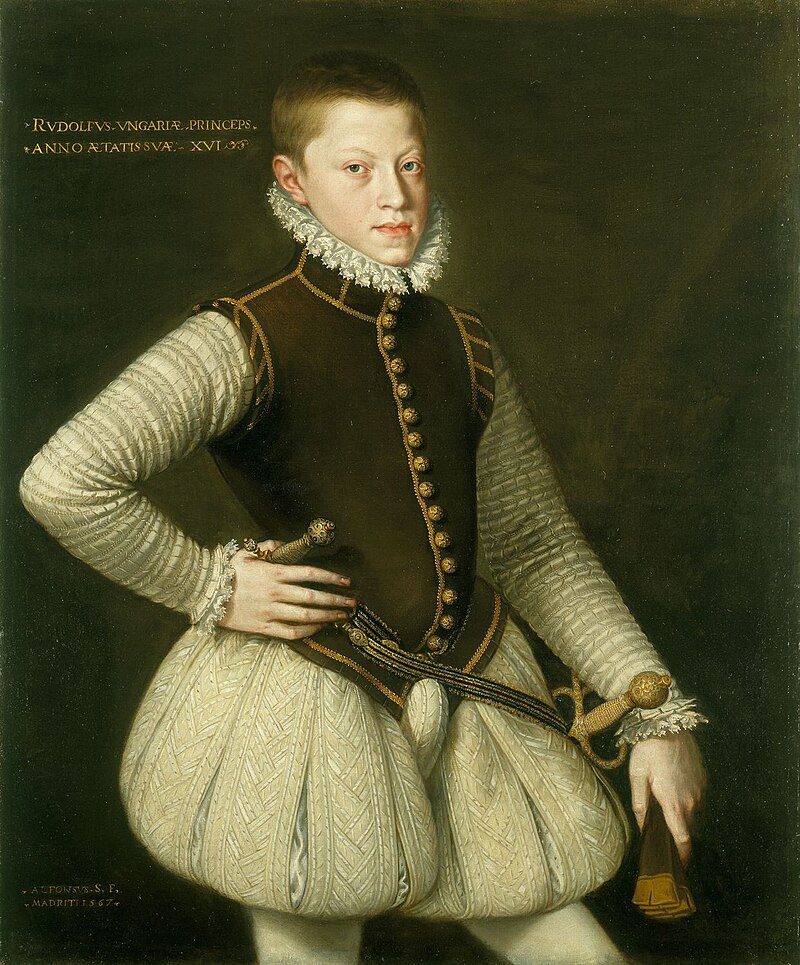
Rudolf at age fifteen, while at the court of his uncle King Felipe II of Spain, by Alonso Sánchez Coello, 1567; Credit – Wikipedia
Rudolf spent his early years at the courts of his grandfather Ferdinand I, Holy Roman Emperor and father Maximilian II, Holy Roman Emperor. There was a pro-Protestant contingent among the nobility at Maximilian II’s court in Vienna. Johann Sebastian Pfauser, Maximilian’s court chaplain, had originally been Roman Catholic but converted to Lutheranism. Through his influence, Maximilian abandoned purely Catholic customs, read Protestant writings, and refused to receive Communion according to the Catholic rite. To protect Rudolf and Ernst, Maximilian II’s two eldest sons, from Protestant influences, King Felipe II of Spain, the boys’ maternal uncle, urged that they leave their father’s court. From 1563 – 1571, Rudolf and Ernst lived in Spain at the Roman Catholic court of their maternal uncle King Felipe II of Spain.
Rudolf never married. In 1568, as part of the Habsburg marriage policy, sixteen-year-old Rudolf had been betrothed to his first cousin, two-year-old Isabella Clara Eugenia of Spain, the daughter of Rudolf’s maternal uncle King Felipe II of Spain. Isabella Clara Eugenia had to wait for more than twenty years before Rudolf declared that he had no intention of marrying anybody. In 1599, 31-year-old Isabella Clara Eugenia married Albrecht VII, Archduke of Austria, Governor of the Low Countries, one of Rudolf’s younger brothers.

Rudolf’s father Maximilian II, Holy Roman Emperor; Credit – Wikipedia
In 1572, Rudolf’s father Maximilian II passed the crown of Hungary to his son, and in 1575, Rudolf was also granted the crown of Bohemia and the Habsburg hereditary territories. Rudolf was elected King of the Romans in 1575, ensuring that he would succeed his father as Holy Roman Emperor. Maximilian II, Holy Roman Emperor died, aged forty-nine, in the Imperial City of Regensburg, now in the German state of Bavaria, on October 12, 1576.
Rudolf is considered an ineffective ruler whose mistakes directly led to the Thirty Years’ War (1618 – 1648), one of the longest and most destructive conflicts in European history, with an estimated 4.5 to 8 million soldiers and civilians dying as a result of battle, famine, and disease. However, Rudolf was a major patron of the arts and sciences, and his support helped foster the Scientific Revolution. Although raised in his uncle’s Catholic court in Spain, Rudolf was tolerant of Protestantism and other religions including Judaism. His tolerance toward the Jews resulted in the flourishing of Jewish cultural life and an increase in the Jewish population during Rudolf’s reign. Rudolf’s conflict with the Islamic Ottoman Empire was his undoing. He was unwilling to compromise with the Ottomans and was determined to unify all of Christendom with a new crusade, so he started a long and indecisive war against the Ottomans, the Long Turkish War (1593 – 1606).

Rudolf’s brother, the future Holy Roman Emperor Matthias; Credit – Wikipedia
Rudolf’s Hungarian subjects were tired of the Long Turkish War and revolted in 1604. In 1605, Habsburg family members forced Rudolf to give control of Hungary to his brother Archduke Matthias. By 1606, Matthias had negotiated peace with the Hungarian rebels (1606 Treaty of Vienna) and the Ottomans (1606 Peace of Zsitvatorok). However, Rudolf was angry with Matthias’s concessions and his hold on power and he prepared to start a new war against the Ottoman Empire. With support from the Hungarians, Matthias forced Rudolf to cede the crowns of Hungary, Austria, and Moravia to him. Meanwhile, the Bohemian Protestants demanded greater religious liberty, which Rudolf granted in the Letter of Majesty in 1609. However, when the Bohemians Protestants asked for further freedom, Rudolf used his army against them. The Bohemian Protestants then appealed to Matthias for help. Matthias’ army held Rudolf prisoner at his usual residence, Prague Castle in Prague, Kingdom of Bohemia, now in the Czech Republic, until 1611 when Rudolf ceded the crown of Bohemia to Matthias. Rudolf lost what was left of his power and lived in isolation at Prague Castle in Prague, Kingdom of Bohemia, now in the Czech Republic.

Rudolf, Holy Roman Emperor, 1590s; Credit – Wikipedia
Rudolf, aged fifty-nine, died at Prague Castle on January 20, 1612, nine months after he had been stripped of all effective power by his younger brother, except the empty title of Holy Roman Emperor, to which Matthias was elected five months later. Toward the end of his life, Rudolf showed signs of schizophrenia, refused to bathe, and lived in squalor. Rudolf was buried in the royal vault at St. Vitus Cathedral in Prague, Kingdom of Bohemia, now in the Czech Republic.

St. Vitus Cathedral in Prague, Czech Republic, where Rudolf is buried; Credit – By Alvesgaspar – Own work, CC BY-SA 4.0, https://commons.wikimedia.org/w/index.php?curid=52660920
This article is the intellectual property of Unofficial Royalty and is NOT TO BE COPIED, EDITED, OR POSTED IN ANY FORM ON ANOTHER WEBSITE under any circumstances. It is permissible to use a link that directs to Unofficial Royalty.
Works Cited
- Flantzer, Susan. (2023) Maximilian II, Holy Roman Emperor, King of Bohemia, King of Hungary and Croatia, Archduke of Austria, Unofficial Royalty. Available at: https://www.unofficialroyalty.com/maximilian-ii-holy-roman-emperor-king-of-bohemia-king-of-hungary-and-croatia-archduke-of-austria/ (Accessed: 02 June 2023).
- Rudolf II. (HRR) (2023) Wikipedia (German). Available at: https://de.wikipedia.org/wiki/Rudolf_II._(HRR) (Accessed: 02 June 2023).
- Rudolf II, Holy Roman Emperor (2023) Wikipedia. Available at: https://en.wikipedia.org/wiki/Rudolf_II,_Holy_Roman_Emperor (Accessed: 02 June 2023).
- Wheatcroft, Andrew. (1995) The Habsburgs. London: Viking.
- Wilson, Peter H. (2016) Heart of Europe – A History of the Holy Roman Empire. Cambridge, MA: Harvard University Press.






















